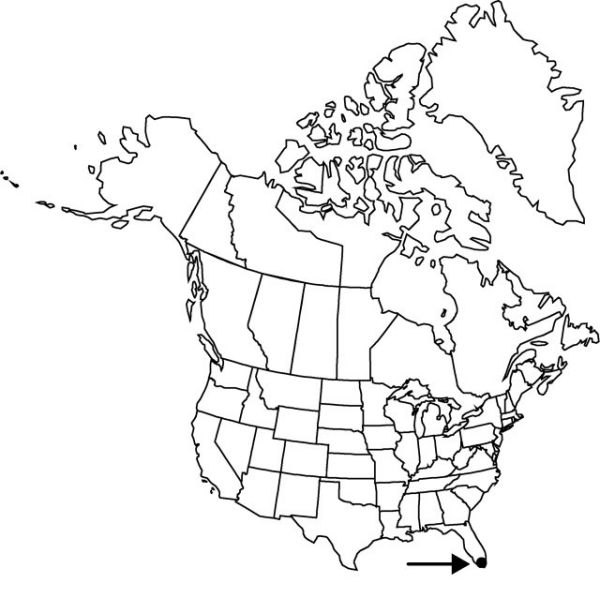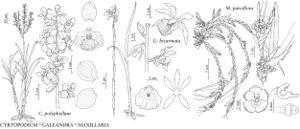Difference between revisions of "Cyrtopodium polyphyllum"
Acta Bot. Brasil. 8: 12. 1994.
imported>Volume Importer |
imported>Volume Importer |
||
| Line 65: | Line 65: | ||
|publication year=1994 | |publication year=1994 | ||
|special status=Introduced;Illustrated | |special status=Introduced;Illustrated | ||
| − | |source xml=https:// | + | |source xml=https://bitbucket.org/aafc-mbb/fna-data-curation/src/2e0870ddd59836b60bcf96646a41e87ea5a5943a/coarse_grained_fna_xml/V26/V26_1320.xml |
|subfamily=Orchidaceae subfam. Epidendroideae | |subfamily=Orchidaceae subfam. Epidendroideae | ||
|tribe=Orchidaceae tribe Cymbidieae | |tribe=Orchidaceae tribe Cymbidieae | ||
Latest revision as of 21:13, 5 November 2020
Plants terrestrial, 50–150 cm. Pseudobulbs elongate, fusiform. Inflorescences erect, racemes to panicles, 100–200 cm. Flowers bright yellow, 3–4 cm wide; lip with middle lobe margins not conspicuously verruculose-tuberculate, lateral lobes bright yellow, shorter than middle lobe. Capsules to 10 cm.
Phenology: Flowering winter.
Habitat: Pinelands
Elevation: 10–100[–1500] m
Distribution

Introduced; Fla., South America (Brazil).
Discussion
Cyrtopodium polyphyllum was reported for Florida (C. A. Luer 1972) as C. andersonii (Lambert) R. Brown. The only available herbarium specimen [McCormack sub G. N. Avery 1155 (FTG)] is referable to C. polyphyllum. Cyrtopodium andersonii differs from C. polyphyllum in having narrowly ovate rather than broadly elliptic sepals (G. A. Romero-G. and G. Carnevali F.-C. 1999).
Selected References
None.
